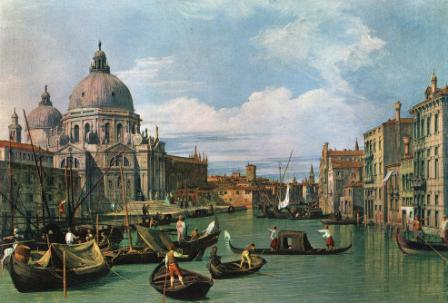Giovanni Antonio Canal, commonly known as Canaletto (1697-1768), was not a man much inclined to travel. He made his name painting views of Venice, which he sold principally as souvenirs of the city to English aristocrats on the Grand Tour. His clientele were men of the world, familiar with Florence, Paris and London, but Canaletto preferred to stay in one place. According to his earliest biographer, Antonio Maria Zanetti, he only left his native city once during his formative years, travelling briefly to Rome in 1719-20, ostensibly to help his father produce stage sets for opera. Realising that his vocation lay elsewhere, he “solemnly excommunicated the theatre”, as Zanetti expressed it, although the truth was not that simple. Canaletto spent the next twenty years painting Venice as though it were one great stage set – a floating city so improbable as to resemble a fiction, peopled by carnivalesque masqueraders, men and women disguised and costumed like a shifting cast of actors and actresses.
But by the early 1740s the harsh realities of conflict across Europe meant that life, even in gilded, glittering Venice, had to change. There were fewer parties in La Serenissima, fewer visitors. As the War of the Austrian Succession (1740-48) spread into


